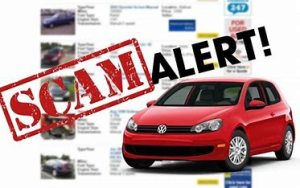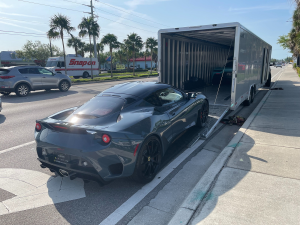How to Ship an Electric Car: The Ultimate Guide

Electric cars are growing in popularity, and more people are looking for ways to transport them safely. Whether you are moving, selling, or buying an electric car (EV), shipping requires extra care compared to gas-powered vehicles. Unlike traditional cars, Electric cars have large, sensitive batteries and unique handling requirements.
In this guide, we will explain everything you need to know about how to ship an electric car in a simple and easy-to-understand way.
1. Choosing the Right Auto Transport Company
Not all car transport companies handle electric vehicles. Some may lack the right equipment or knowledge. When choosing a company, look for one with experience shipping EVs. A professional auto transport company should have proper equipment, offer suitable transport options, and provide insurance coverage.
If you are wondering how to ship an electric car safely, selecting a reliable company is the first step. It is important to check reviews from past customers to ensure the company is trustworthy
2. Understanding the Shipping Cost
Shipping an electric car may cost more than shipping a gasoline-powered car. This is because electric cars have larger, heavier batteries, which increase transport fees. Some transporters also charge extra for handling EVs due to their unique requirements.
Factors That Affect Shipping Cost
- Weight of the car: Heavier cars require more effort and fuel to transport.
- Distance: Longer shipping distances increase costs.
- Transport method: Enclosed shipping is more expensive than open shipping (explained below).
- Pickup and delivery locations: Transporting to remote areas may cost more.
3. Open vs. Enclosed Transport: Which One to Choose?
One of the most important decisions in shipping an electric car is choosing between open transport and enclosed transport.
- Open Transport: This is the most common and affordable option. The car is loaded onto an open trailer along with several other vehicles. However, since the trailer is exposed, the car is vulnerable to weather conditions, road debris, and dust. Open transport is suitable for standard electric cars and shorter distances.
- Enclosed Transport: In this option, the car is placed inside a covered trailer, protecting it from weather, road debris, and potential damage. Enclosed transport is ideal for high-end electric vehicles like Tesla, Lucid, and Rivian, or if you want extra security for your car. This method is more expensive but offers better protection.
Which One Should You Choose?
- If you are transporting a luxury EV or shipping it over a long distance, enclosed transport is highly recommended.
- For standard EVs or shorter distances, open transport is a more budget-friendly option.
4. Preparing Your Electric Car for Transport
Before shipping your EV, some steps need to be taken to ensure a smooth process.
Steps to Prepare Your EV:
- Check Battery Level: Keep the charge at 20-30%. A fully charged battery makes the car heavier, while a completely drained battery may cause problems when moving the car during loading and unloading.
- Turn Off Electronic Features: Disable alarms, GPS tracking, and other electronics to prevent battery drain.
- Fold Side Mirrors & Remove Accessories: This helps prevent damage to mirrors and detachable parts.
- Secure Cables and Chargers: If you are shipping the charger with the car, store it properly to avoid loss or damage.
- Clean the Car and Take Photos: A clean car makes it easier to spot any damage before and after transport. Take detailed photos for reference in case of any claims.
Learning how to ship an electric car involves careful preparation to prevent damage and ensure a smooth process.
5. Tracking Your Shipment
Many transport companies offer GPS tracking so you can monitor your car’s location in real time. Tracking allows you to:
- Check estimated delivery times.
- Get updates in case of delays.
- Stay informed throughout the shipping process.
If tracking is important to you, ask the transport company whether they offer this feature.
6. Inspecting Your Car After Delivery
Once your EV arrives, perform a full inspection:
Post-Delivery Checklist:
- Check for scratches, dents, or any visible damage.
- Ensure the battery charge level is as expected.
- Test drive the car to confirm everything functions properly.
- Compare with pre-shipping photos. If there is any damage, report it to the transport company immediately.
If you notice any issues, document them with photos and start an insurance claim if necessary
Conclusion
Understanding how to ship an electric car correctly can save you time, money, and stress.
By following right steps, you can ensure your electric car reaches its destination safely and in perfect condition. Whether you are shipping across the country or internationally, proper planning makes all the difference.








Post Comment